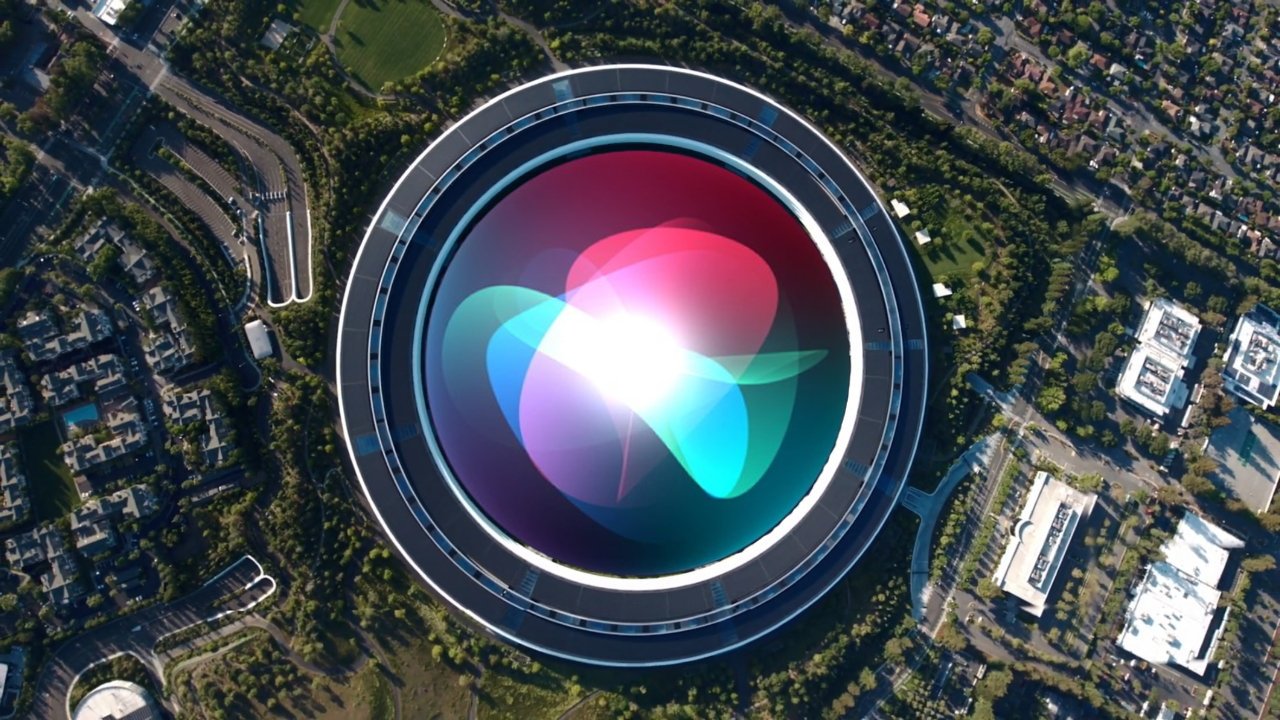Rumored iOS 18 Siri boost will be driven by massive acquisitions over years
Apple's investment in more AI firms than any of its major rivals, and a marked increased in related job ads, backs up claims that Siri will see significant improvements at WWDC 2024.

A Siri icon superimposed on Apple Park
Again belying the claim that Apple is lagging behind the industry in its use of AI, the company has been hiring generative AI engineers, and more.
It's also been acquiring companies such as AI-powered video compression firm WaveOne, and recently publishing AI research papers. Apple actually won an award for an AI research paper -- back in 2017.
Compiling reports of job ads, research papers and AI investments, the Financial Times says that Apple is now boosting its efforts to bring ChatGPT-style generative AI to iPhone.
"[Apple is] getting ready to do some significant M&A," Daniel Ives at Wedbush Securities told the publication. "I'd be shocked if they don't do a sizeable AI deal this year, because there's an AI arms race going on, and Apple is not going to be on the outside looking in."
Listing both equity and add-on investments, the Financial Times says that Apple has made 21 such investments in firms since 2017. Over the same period, Accenture made 19, while better-known AI rivals Microsoft and Meta made 12 and 11 investments respectively.
Intel reportedly invested in or acquired 9 companies, while IBM and Google's parent Alphabet worked with 8 each.
The Financial Times does not give a reason why its count starts in 2017. However, significantly, Apple hired AI head John Giannandrea away from Google in 2018.
It also cites Morgan Stanley as reporting that almost half of Apple's current job ads include some reference to AI, Machine Learning, or Deep Learning. That's a marked increase from Morgan Stanley's November 2023 report, when it said that since 2015 "AI-related job postings at Apple have risen from 5% of total Apple job postings to ~20% today."
Rumor Score: Possible
Read on AppleInsider

Comments
Apple said Retina Display which was qHD or QVGA.
Apple uses a catch-all Machine Learning while others refer to AI or Generative AI as well as Machine Learning.
All this special naming is simply attempting to make one's services sound unique and, thus, more special than someone else's feature/services.
What matters is how useful it is and whether it will work consistently. That's where they all have work to do.
EDIT: After writing this I realized the third one is not like the first two, where Apple implies uniqueness. When it suits them they can do just the opposite and claim that their Machine Learning is just the same as what anyone else calls Generative AI.
Apple has the strongest and most focused marketing machine on the planet.
Siri: “Take the I dash 90 East for 8 miles…”
Because you definitely over-simplified Retina.
It seems very unlikely that one year Apple decided to say "We have xxx dpi." That has no long term road map. The actual Retina explanation fits into a much bigger picture and road map that the entire industry was following.